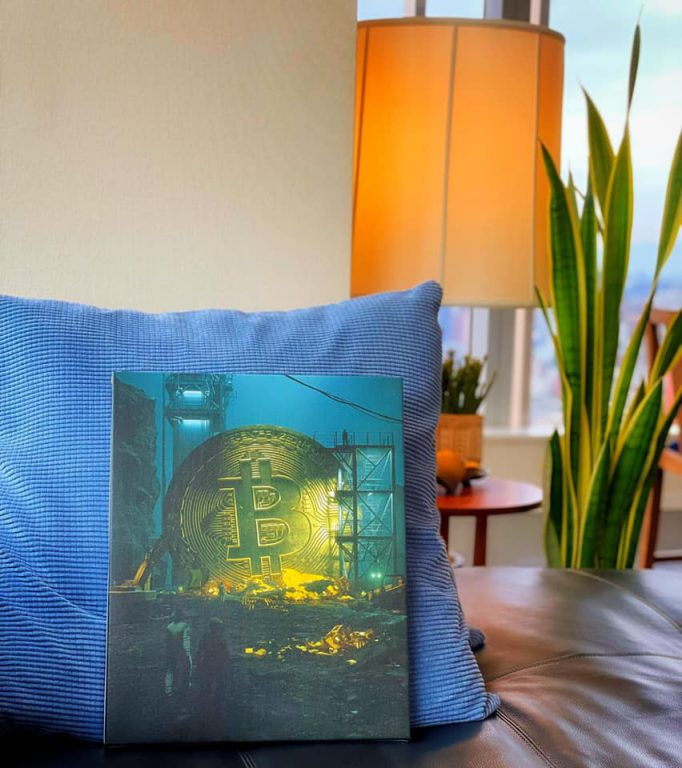Decoupling in Virtual Currency is on the way! Earth-friendly Mining

If you’re not interested in virtual currency, this post may be as if it’s not necessary, but, well, read anything out of curiosity, I guess.
To think about why a nation is necessary, it may be easier to understand the origins of money. I think the state is an organization invented to do what we cannot do on our own. The role of the state is to control a group of people (society) by taxing them broadly and fairly in order to solve their problems.
When there was no country, people bartered. When a country was established, it created its own money, and an economy was born when goods could be purchased. The money collected from everyone was used to build roads and hospitals, and certain authorities were entrusted to the state to protect people’s lives and livelihoods.
But that was fine within one country, but how do you share the value of money when interacting with other countries? The question became how to settle the payment when selling or buying goods across countries.
Coins are merely paper or coins created on the basis of credit. When a country loses its credit, the value of the exchange falls. When a country is strong, the value of the country’s money goes up. In the 21st century, such money has become increasingly cashless, shifting from real paper and coins to digital data.
And virtual currency is a new money created in January 2009 based on such background. What was new was that it was not created by the government. As mentioned above, money appears to be made of paper and coins, but it is actually made of “credit. So, why can’t the private sector coinage be created without the government’s stamp of approval? This is where it was born. The reason why the coin was born after the Lehman Shock and why it is currently in vogue due to the gold surplus caused by the corona is because it was needed when the value of the money made by the government was shaken. This is considered to be the case.
Virtual currency is established by the confidence of many people (a process called mining). The fact that it can span borders at low cost makes it a very 21st century tool that can be applied in the modern world.
Now, let’s talk about the virtual currency crash of the past few weeks.
In March of this year, a new digital artwork (Artis: BEEPLE) using virtual currency was sold at Christie’s for 7.5 billion yen. The bid was sold for ゙. This triggered the virtual currency to rise in value rapidly. Ethereum (ETH), the second most circulated currency after Bitcoin (BTC), went from 160,000 yen on March 1 to 47,000 yen on May 12. The value tripled to ¥10,000. (Today it is 260,000 yen…)
This short-term crash was triggered by a statement by Elon Musk of Tesla Inc. A few months ago, he said that Tesla cars could be bought with virtual currency (BTC) and the price went up, then fell when he said he would stop because it would destroy the global environment. ETH is also falling in value as a result.
Those who have started investing in virtual currencies this year are panicking, but please look at the historical background and make a proper judgment. Virtual currencies have been in a state of constant ups and downs for the past 12 years since their birth, but they have been going up for a long time.
Let’s look at things on a fact basis: how much electricity does it take to make a BTC, and how much are we destroying the planet?
Virtual currency is made up of a process called mining.
Mining generally means “mining.” In virtual currency, it refers to the act of generating new blocks and obtaining virtual currency as a reward. And this process requires a lot of electricity. Bill Gates has even said that if virtual currency becomes a reserve currency, the earth will collapse twice as fast.
However, according to the Cambridge University BTC Electricity Consumption Index, BTC miners account for only about 0.6% of global electricity consumption. This means that the BTC economy is equivalent to the carbon footprint of a small developing country like Sri Lanka or Jordan.
According to ARK Investment Management, BTC consumes less than 10% of the energy required by traditional banking systems. The study also found that the number of banks in the world that have a
Still, there is no doubt that power is needed for virtual transit creation. That’s where these ventures come in!
Gryphon Digital Mining, a BTC mining venture, mines exclusively from renewable energy. The company has raised $14 million (1.5 billion yen) for its ゙.
Their release states that they can produce electricity at a very low cost, “electricity cost per kWh = 1.43 yen ($0.013)”. What kind of unit is this….
The cost of electricity per kWh in Japan = 27 yen/kWh ($0.245). 10 yen/kWh ($0.091) in cheaper countries such as Kyrgyzstan and Mongolia.
After all, renewables, not just virtual ones, cost less for electricity!
And furthermore, all virtual currencies are absurdly wasteful of power, but that’s not true. Here’s an analogy.
BTC = “Burj Khalifa,” the world’s tallest skyscraper (829.8 m) in Dubai, United Arab Emirates …
Ethereum (PoW) = Leaning Tower of Pisa (55.86m)
Ethereum (after PoS) = about screw high
PoS is 10,000 times more eco-friendly than PoW.
Incidentally, the method of agreement verification to check whether transactions on the blockchain are not fraudulent is called PoW or PoS. The first is called a “゙”.
… I got a little too technical.
Globalization of the earth will not stop, however. The digitalization of money (cashless) is progressing rapidly.
The world is moving toward a decarbonized (non-carbon) society. Virtual currencies, like car manufacturers, will be run on natural energy. With this in mind, I think it would be better to look at this phenomenon from a more macro perspective.
Let’s try to find the facts behind every news headline, shall we?
By the way, this picture is by BEEPLE
◆ Reference
Bitcoin History at a Glance! Easy to understand price trends
Elon Musk stops buying Tesla cars with bitcoin, bitcoin is falling after the tweet | TechCrunch Japan
BTC Mining Venture Raises $14 Million – Mining Only Renewable Energy
Power consumption reduced by 99% after ETH 2.0 transition = Ethereum Foundation study






